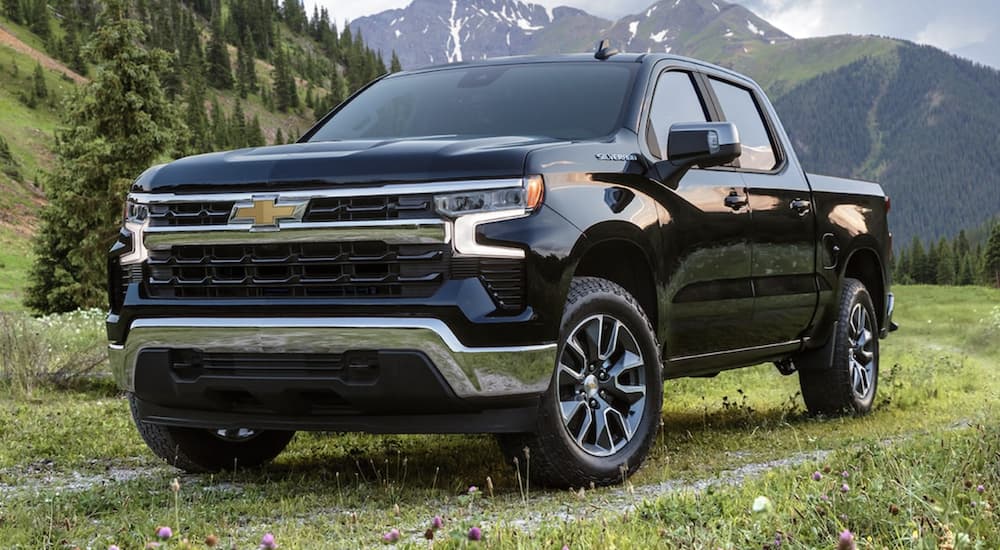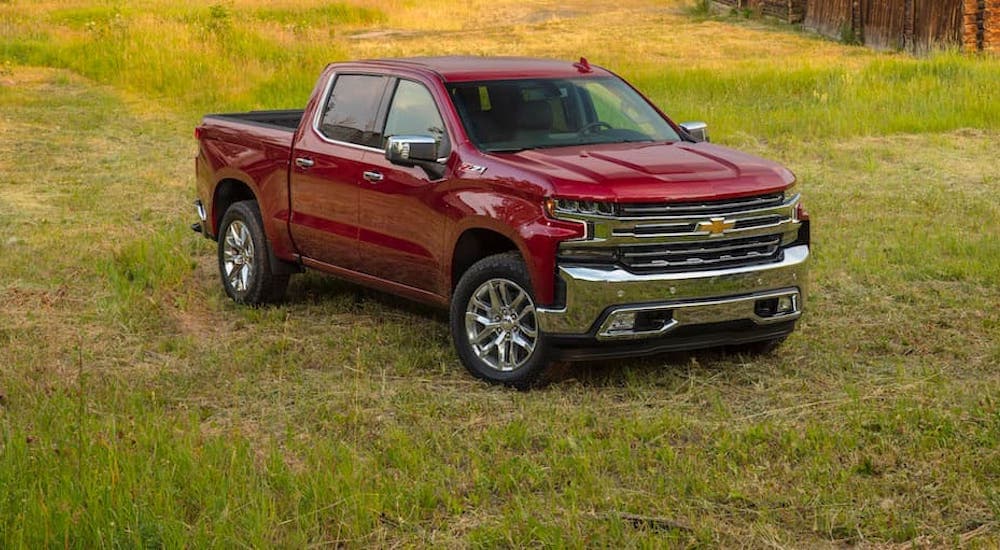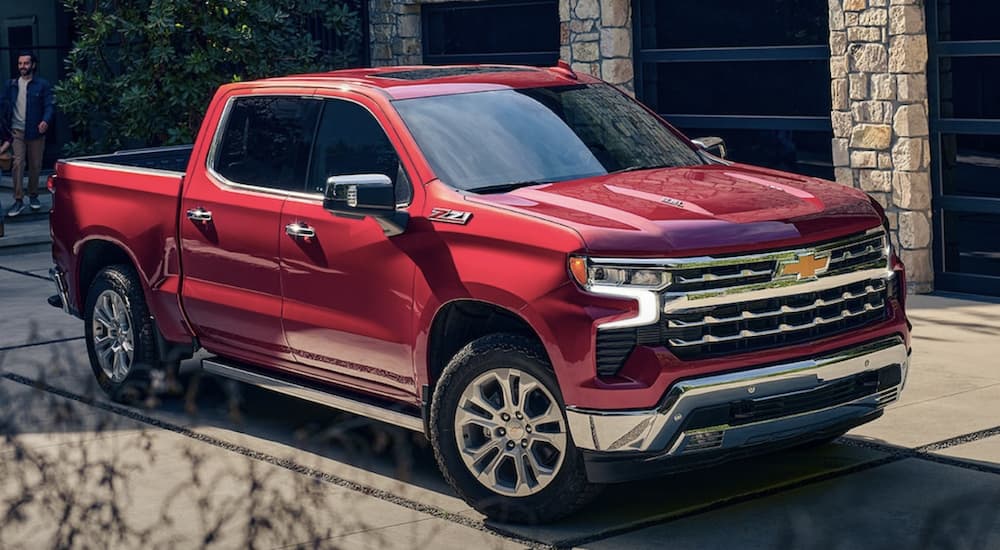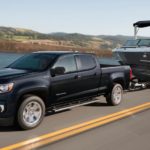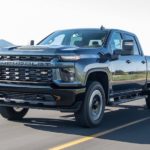Diesel trucks are legendary for their power and durability. Names like Cummins, Power Stroke, and Duramax are legends in the automotive world, with heavy-duty truck owners swearing by the capability they offer. But diesel engines have never really found the same level of popularity in the world of half-ton pickups, and this short-lived segment is on the brink of vanishing entirely. If you want a light-duty diesel truck, then online Chevy Silverado sales are your best bet. While Ford and Ram have also offered diesel options over the last decade, they have recently been discontinued, leaving the Chevy Silverado 1500 as the only game in town.
The “baby Duramax” offered in the current Silverado 1500 is an amazing engine, providing robust capability, especially when it comes to serious towing. But despite currently leading the world of diesel half-tons, Chevy was actually the latecomer to the game and took several years to get its footing in the market. In fact, it wasn’t until after all the other manufacturers had begun turning away from diesels that Chevy managed to elevate its Silverado 1500 diesel option to the head of the pack. However, Chevy’s history with smaller diesel trucks goes back a lot longer than you might expect. Whether you’re a fan of pickup truck history or are shopping for a used diesel truck, the story of how Chevy created the half-ton diesel market only to abandon it and return decades later is an interesting one.
The Diesel Truck Appears
While Chevy didn’t put a modern diesel engine in the Silverado 1500 until years after diesels were available in the F-150 and Ram 1500, a Chevy half-ton was actually the very first diesel pickup sold in America. The 1978 Chevy C10 broke from the tradition of only using gasoline engines to offer a 5.7L Oldsmobile V8 as an option. Naturally aspirated, this engine was a far cry from the powerful diesels of today, producing just 120 hp and 220 lb-ft of torque. It was also rather unreliable and was dropped from the lineup just three years later after seeing limited production.
Chevy wasn’t alone in failing to build a functional diesel truck in those early days. In fact, Dodge also offered a diesel half-ton in 1978 that was even less popular. A 4.0L Mitsubishi I-6 was available in the Dodge D100 for just two years before being discontinued. This engine was also naturally-aspirated and generated an even more underwhelming 105 hp and 169 lb-ft of torque. After these early and unsuccessful experiments with diesel half-tons, the idea did not resurface until over 30 years later.
Instead, diesel engines shifted to the heavy-duty truck market. Chevy again led the way, offering a substantially better 6.2L Detroit V8 in the 1982 C20 and C30. Although the power output wasn’t massively better, topping out at 148 hp and 246 lb-ft of torque, it was efficient and functional, opening the floodgates of other diesel options. In 1984, Ford added the first diesel engine to the F-Series with the 6.9L International Harvester V8. Significantly more powerful than the Chevy diesel, the Ford 6.9L produced up to 315 lb-ft of torque and kicked off the power wars that continue to this day.
The next step was the introduction of the turbo-diesel. In 1989, Dodge partnered with Cummins to offer the iconic 5.9L B Series I-6 in its heavy-duty models. By adding forced induction, engine output skyrocketed, and the Cummins provided an impressive 400 lb-ft of torque. The B Series also used direct injection, providing more reliable power and increasing the livability of diesel engines. The other members of the Big Three were quick to catch on, with Chevy introducing a turbocharged 6.5L Detroit V8 in 1992 and Ford throwing its hat in the ring with a 7.3L turbo-diesel in 1993.
Returning to the Half-Ton
As diesel truck sales soared and diesel engines became more capable and more reliable, it was only a matter of time before someone again decided to try putting one in a half-ton truck. Ram was the first to throw the dice, unveiling a 3.0L EcoDiesel V6 for the 2014 Ram 1500. With 240 hp and 420 lb-ft of torque, this engine could tow up to 9,200 lbs and demonstrated that diesel engines were a viable option for half-ton pickups.
Now, what not many people realize is that the Ram EcoDiesel was supposed to be a GM engine. Work began on this motor in the late 2000s at VM Motori, an Italian company that GM had bought 50% of in 2007. However, the financial turmoil of the period led to Fiat buying out VM Motori in 2011 before merging with Chrysler in 2014. The end result was that Chrysler found itself with a powerful diesel engine intended for the American market and immediately put it into the Ram 1500. Without GM’s bankruptcy and restructuring in 2009, the EcoDiesel may well have been offered in the Silverado 1500 instead.
However, the post-bankruptcy Chevy was a much more conservative company, and it let other brands take the lead with the new generation of diesel half-ton trucks. Nissan offered a 5.0L Cummins V8 in the Titan XD in 2016, and Ford introduced the first F-150 Power Stroke in 2018. While the Nissan-Cummins partnership was not a success, and the engine was discontinued in 2020, the Ram and Ford diesel options kept building steam. At this point, Chevy was the odd man out and had to join the game, but waiting had given the bowtie brand the chance to develop what is arguably the best half-ton diesel engine ever built: the 3.0L Duramax I-6.
The Baby Duramax Arrives
While Ram and Ford opted to use more compact V6 diesel options, Chevy chose to use an I-6 for the Silverado. The I-6 or “straight six” configuration has produced many legendary engines, from the Toyota 2JZ to the Cummins B Series. This is because an I-6 has naturally perfect primary and secondary engine balance without any need for engineering workarounds to smooth out vibration. The only downside to the I-6 configuration is its length (the Chevy 3.0L Duramax is three feet long––roughly a half-foot longer than the Silverado’s 6.2L V8 option), but a full-size pickup can accommodate that length without too much difficulty.
When introduced for the 2020 Silverado 1500, the “baby Duramax” developed 277 hp and 460 lb-ft of torque, giving it the same torque output as the Silverado’s top-of-the-line 6.2L V8 engine. In terms of raw power, this compares favorably to Ford’s 3.0L Power Stroke, which offers 250 hp and 440 lb-ft of torque, and Ram’s 3.0L EcoDiesel, with its 260 hp and 480 lb-ft of torque. However, Chevy did not engineer the rest of the diesel Silverado to take full advantage of this level of power. While the 2020 F-150 Power Stroke could tow up to 11,500 lbs, and the 2020 Ram 1500 EcoDiesel could haul an impressive 12,750 lbs, the 2020 Silverado 1500 Duramax was limited to just 9,300 lbs.
It wasn’t until the Silverado’s 2022 overhaul that Chevy beefed up the rest of the truck and enabled Duramax models to tow up to 13,300 lbs, matching the max trailering capacity of a Silverado 1500 with the 6.2L V8. At last, the brand that had started the half-ton diesel revolution 44 years before was again at the head of the pack. But by that point, the rest of the pack was rapidly disappearing. The F-150 Powerstroke was discontinued during the 2021 model year, and in September 2022, Ram announced that the EcoDiesel would end production in January 2023.
The Reigning Champion – But for How Long?
The Chevy Silverado is currently the only half-ton diesel slated to remain in production for 2023, and we don’t expect it to go away anytime soon. In fact, the 2023 model has seen a substantial redesign to the 3.0L Duramax, increasing output to 305 hp and 495 lb-ft of torque. Chevy also continues to offer this engine in other models, such as the Tahoe and Suburban. However, increasing emissions regulations and the impending bans on all combustion engines in several states would suggest that the half-ton diesel truck isn’t long for this world. If you’re a fan of these capable pickups, then we’d suggest getting online and finding a Silverado 1500 diesel for sale sooner rather than later because we can’t say how much longer they will be around.
